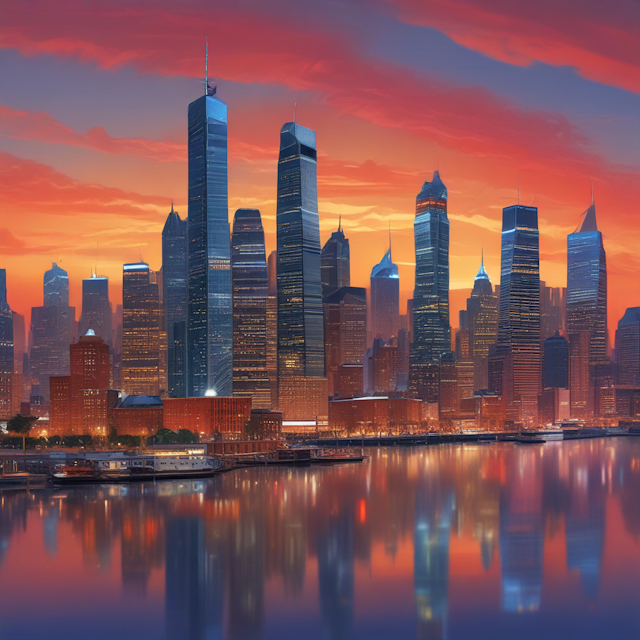
| Name | Kingdom of New Netherland |
| Ties | Strong economic and political ties to former colonial holdings |
| Economy | Major global power, center of trade and industry |
| History | Established through Dutch colonization of Brazil in 17th century |
| Type of government | Constitutional monarchy |
| International status | Leading member of the international community |
The country now known as New Netherland has a distinct history and identity compared to our timeline, stemming from its colonization by the Dutch rather than the Portuguese. Established as the Dutch colony of New Holland in the 17th century, it gained independence in the early 19th century and became the Kingdom of New Netherland, a constitutional monarchy that has since grown into a major regional and global power.
The first Dutch settlers arrived in what is now New Netherland in the early 1600s, establishing trading posts and small agricultural colonies along the northeastern coast. Over the next few decades, the Dutch gradually expanded their control over the region, displacing the native Tupi, Guarani, and Guiana peoples.
In 1630, the Dutch West India Company formally incorporated the territory as the colony of New Holland, with the capital city of New Rotterdam (present-day São Paulo) founded in 1654. The colony prospered as a hub of the Dutch sugar trade and slave trade, with a plantation economy worked by African slaves.
Despite occasional conflicts with the Spanish Empire and local indigenous uprisings, New Holland remained firmly under Dutch control throughout the 17th and early 18th centuries. It became known for its unique blending of Dutch, African, and Amerindian cultures, as well as its economic and technological innovations.
In the early 19th century, as revolutionary fervor swept across Europe and the Americas, New Holland too declared independence from the Netherlands. In 1812, the colony established itself as the Kingdom of New Netherland, a constitutional monarchy with close ties to the Dutch East Indies and Dutch West Indies.
The first king, Willem I, oversaw a period of dramatic growth and modernization, with the nation's economy rapidly industrializing and its global influence expanding. New Netherland became a major supplier of raw materials, agricultural products, and manufactured goods to the world market.
By the mid-1800s, New Netherland had eclipsed the economic and military strength of its former colonial master, the Netherlands. It began to flex its muscles as a regional hegemon, intervening in conflicts across Latin America and establishing a sphere of influence.
The late 19th century saw New Netherland emerge as a global economic powerhouse. Fueled by rich natural resources, a growing population, and massive investments in infrastructure and technology, the country experienced rapid industrialization.
Key drivers of New Netherland's industrial revolution were:
By 1900, New Netherland was a major producer of steel, textiles, machinery, and other manufactured goods, rivaling established industrial powers like Germany, Britain, and United States. Its global trade networks and colonial possessions further expanded its economic clout.
New Netherland's industrial might and economic prowess translated into growing geopolitical influence, especially across Latin America. The country became a major player in regional affairs, using a mix of economic incentives, diplomatic pressure, and occasional military interventions to maintain its sphere of influence.
Some of New Netherland's key geopolitical moves included:
Though viewed with suspicion by some as a neo-colonial power, New Netherland's economic clout and cultural appeal made it a dominant force in the region throughout the late 19th and early 20th centuries.
With a population of over 150 million, New Netherland is one of the most populous countries in the world. It is also exceptionally diverse, the product of centuries of Dutch, African, Indigenous, and more recent European and Asian immigration.
The national language is Dutch, though many Brazilians also speak Portuguese, Spanish, English, and various indigenous languages. The majority religion is Protestantism, though significant Catholic, Candomblé, and Umbanda minorities also exist.
New Netherland's culture blends Dutch, African, and Amerindian influences in its architecture, cuisine, music, and art. Major centers of culture include the capital of New Rotterdam, the colonial-era city of São Paulo, and the tropical metropolis of Manaos. The country is also known for its vibrant carnival celebrations, football, and its rich natural environment, including the vast Amazon Rainforest.
Despite its unique history, New Netherland has become a prosperous, advanced, and influential member of the global community, carving out a distinctive identity on the world stage.